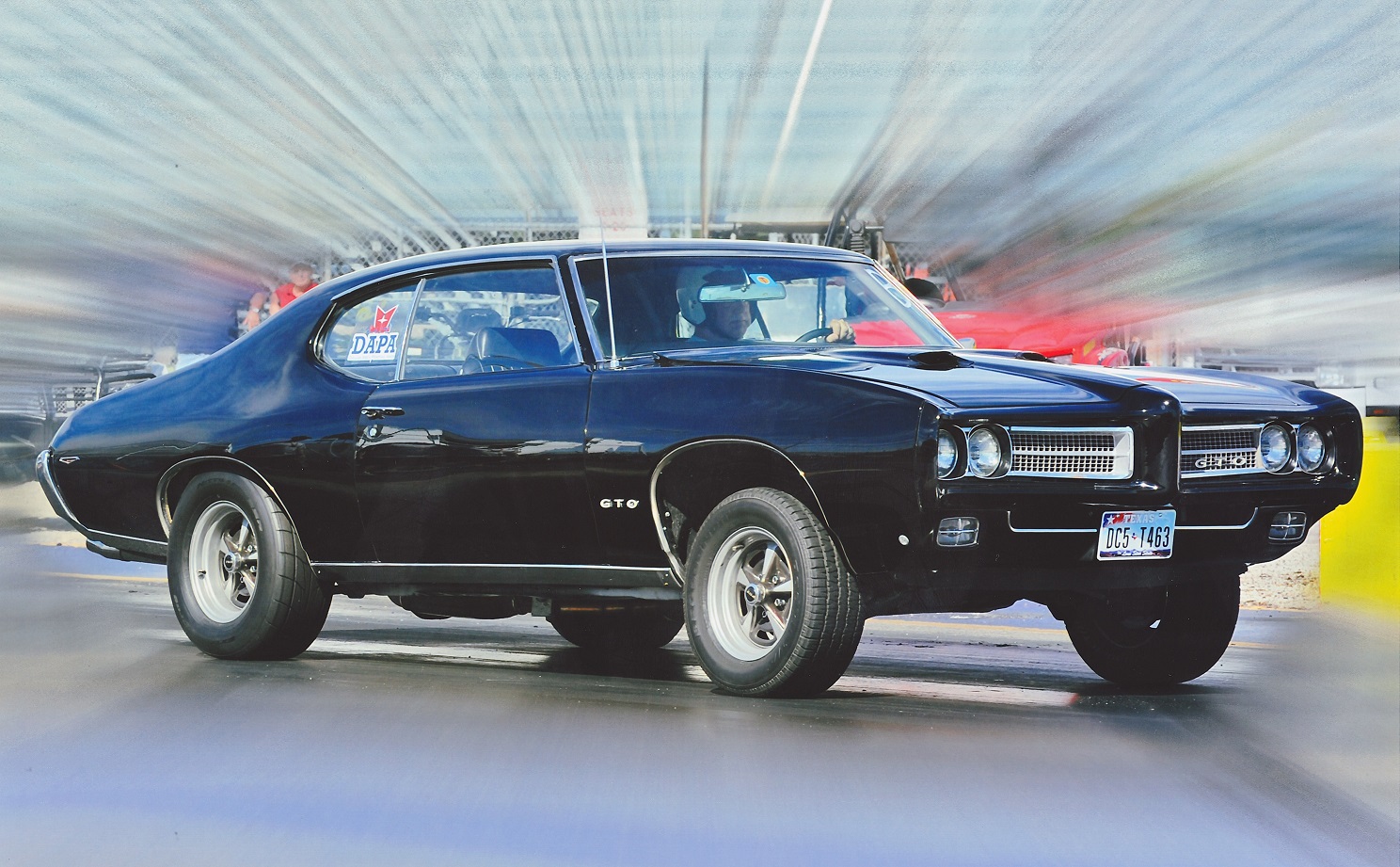Building a Strong Street Machine – Part 6: A-Body Wheel Hop Problems
- March 16th, 2010
- Posted in Jim Hand: Building A Strong Street Machine . Technical Articles
- By D.A.P.A
- Write comment
We have found that certain modifications to the rear suspension on all A Body cars will cause wheel hop during hard acceleration. The use of air shocks or booster shocks (small springs mounted around the shocks) will almost always cause a wheel hop problem. These two devices keep the rear axle assembly from rotating through its normal arc under acceleration. The result is wheel bounce, and if not stopped immediately, broken transmission cases, U-joints, or rear axle assemblies can be expected. Additionally, drive trains that are severely out of alignment can also cause wheel hop. Such modifications as raising the rear of the car much higher than the front, or raising the entire car (ala eight foot tall 4X4s with 8 or more lights on the cab) will also cause or increase wheel hop.
I have personally worked with approximately 20 A Body cars (64 & later) that have ran as quick as mid 11’s at the drag strip and none required any traction device, anti-hop bars, or other add-on devices for wheel hop control. Stock type shocks and a relatively level car is all that we have needed. Some of the add on devices may help, but we have no experience with them. Drag style shocks such as 90-10 are not needed, and if they are used, minimize any street driving with them. In our experience, removing sway bars do not improve traction, and in fact, cause the car to launch with one side of the body higher than the other. Front sway bars are not tightly connected to the frame, and thus do not inhibit normal rise of the front on acceleration. Leave them on and our car will launch much straighter! I also run a rear sway bar to try to keep the car level (side-to-side) on launch!
In extreme cases of very strong low end power in conjunction with a high torque ratio converter, drag style shocks, and even special “high energy springs” may be necessary to keep the rear wheels solidly on the ground during launch. Typically, in cases of traction problems, the tires twist at initial “hit”, which allows the axle to immediately drop. The tires try to return to the original shape, and in doing so, kick the axle back up. This action allows the weight to come off the tires, and the tires may begin to spin. Properly adjusted drag shocks will allow the axle assembly to separate easily from the body at the initial hit, but keep the axle/tires from rebounding unless they also lift the body. This action keeps a load on the tires at all times, and in a sense, keeps the tires “nose” on the ground from initial hit until the car has been launched.
Leaf type suspensions can present some traction problems. As I have very little experience with leaf spring cars, I have no advice on improving traction with leaf springs.

